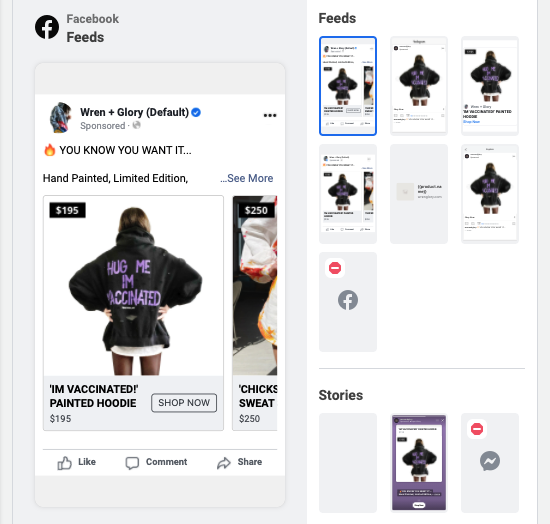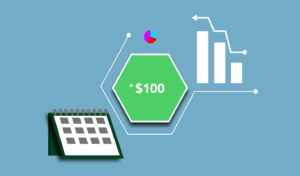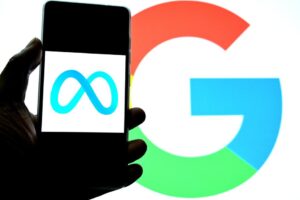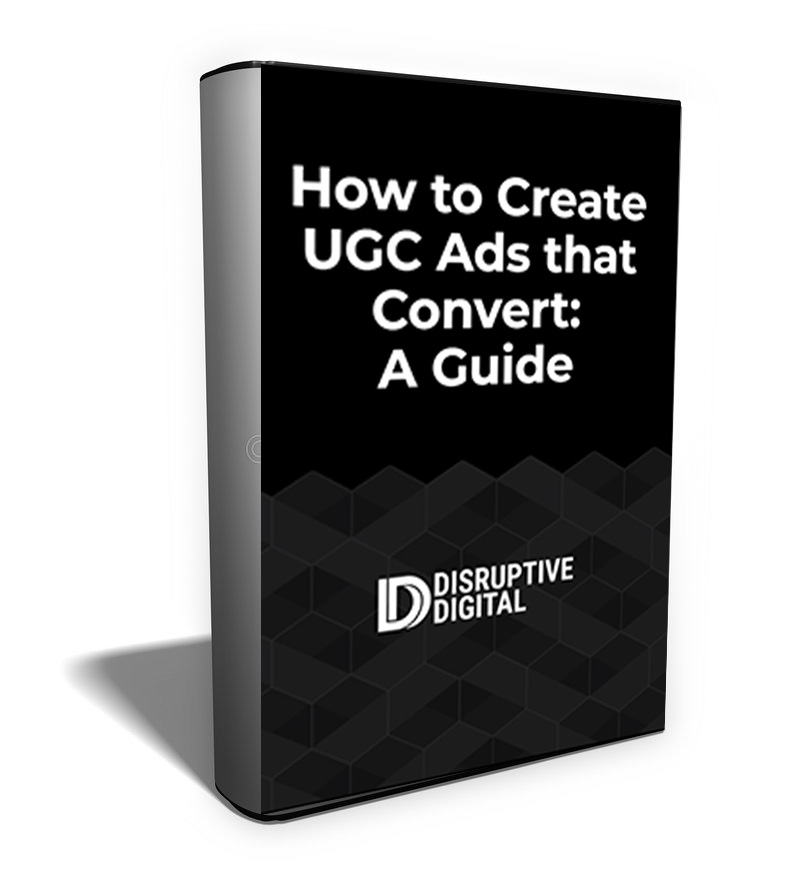This article was originally featured on Social Media Examiner
The ability to deliver relevant ads at the right time can make or break your ad campaigns. Facebook’s dynamic product ads are a valuable tool that allow brands to show personalized ads to users, increasing the likelihood of conversion.
In this post, we’re going to discuss why dynamic product ads are so valuable and look at 10 different tactics you can use to boost results with them.
What Are Dynamic Product Ads & Why Are They Useful?
Facebook’s dynamic product ads allow advertisers to create and use templates that will be auto-filled with information and images from product data feeds to show users ads that are relevant to them.
It’s common, for example, for advertisers to have dynamic product ads tied to their tracking pixel. If a customer views a specific product page, the dynamic ad will show them that particular product in an ad.
Dynamic ads allow advertisers to generate ad campaigns at scale while still delivering the most relevant ads possible to their target audience based on factors like triggered events, pages viewed, and products purchased. Instead of needing to create separate ads for each individual product, they can run a single campaign that links to an entire product catalog or datafeed.
These ads allow Facebook to optimize your ads for you naturally, which can lead to better results as their algorithms are able to serve ads to users most likely to take certain actions.
While each business will need to run tests to determine which dynamic product ads work best for their audience, the following 10 tried-and-true strategies can potentially increase conversion rates at different stages of the sales funnel.
1. Add Offers to Increase the Ad’s Appeal
If your goal is to use dynamic product ads to reach high-intent audiences, adding an offer to your ad can be what pushes them over the edge to convert.
Offers can vary depending on your business, but can include any of the following:
– A percentage off a first purchase
– A dollar amount off a purchase
– Free shipping
– A free consultation or first class
– A free sample or gift with purchase
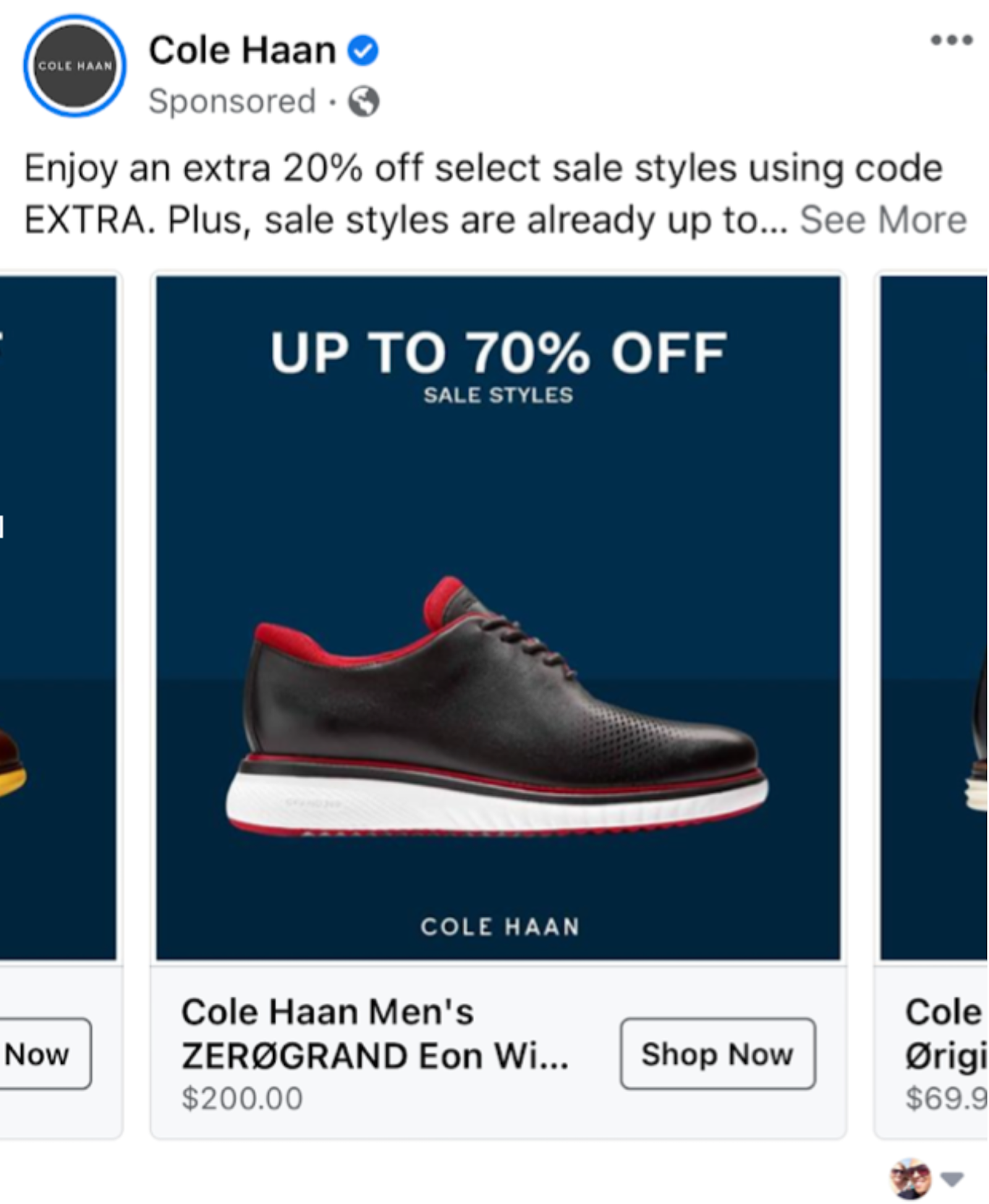
Promoting offers both in the ad copy and on the ad image can further incentivize users to make a purchase.
In the ad above, Cole Haan features an offer for 70% off select sales styles, plus an extra 20% off using code EXTRA. They mention this in the copy and reinforce it in the image, with a “Shop Now” as their CTA.
2. Include Multiple Text & Visual Options for Dynamic Formats
When using dynamic formats, Users will see ad versions that they’re most likely to interact with based on their past on-platform activity, and will be taken to a relevant destination site.
When you’re creating dynamic product ads, there are a few tricks you can use to repurpose assets like “brand name” or “price” to apply relevant product catalog information into the standard copy you’ve created for these ads.

By clicking the “+” sign next to the text creation field’s you can add in dynamic information like brand, description, retailer ID, and price that will be pulled from your data feed for each individual product shown.
You can preview how this dynamic formatting will appear across multiple different placements to ensure that it works for your campaigns.

Preview how dynamic formatting will look before running your ad campaigns.
3. Localize Language & Pricing for International Ads
When expanding your ad campaigns internationally, you may need to factor language and pricing into the equation. Someone in Germany will most likely be able to read an ad written in English, but if they see the US dollar sign instead of a euro, they may automatically assume the product isn’t for them.
Updating your ads language and pricing based on the location of the viewer is an important step to take when you’re scaling your campaign to new territories.
When creating your campaigns, you’ll see the option to add additional languages to your campaigns.

To add additional languages to your dynamic ads, select “Add Languages” in the creation process.
You can select “Add Languages,” and then can connect to different product feed files that have product titles and descriptions in different languages. You can also choose to upload a feed file for your products that contain local pricing, currency, and sizing for different countries if relevant.

You can add language information that includes titles and descriptions in different languages for products, or country information that contains relevant local pricing, currency, and sizing for different countries.
While Facebook does have native translation features that users can rely on, it’s best to serve ads to users in their native language so that no intricacies are lost in auto-translation. It also shows customers that you’re intentional about serving their specific market and that they aren’t an afterthought, which can help you gain trust and credibility.
4. Customize Static Creatives with Frames & Pricing Overlays
It’s a common tactic to add product pricing not only to a carousel description but also to an ad’s image. It can draw the user’s attention to the price point quickly when they’re scrolling, which can in turn help increase conversions.
Unfortunately, though, adding prices to static images can be challenging when you’re working at scale. Pricing often changes overtime due to sale prices, special promotions, or standard changes in the market. The last thing you want to do is need to go back and edit every single product image in your data feed.

You can add information like pricing to static images with native Facebook features.
You can use frames and price overlays on Facebook to turn static images into dynamic ones that feature up-to-date information in real time.
You can currently include information about price and free shipping on your images when you’re running dynamic ads with the objectives of App Installs, Leads, or Catalog Sales.
Once you do, you must select “Single Image or Video.” Then select “Edit Creative” under “Creative Tools.” You can either add catalog information or a frame.
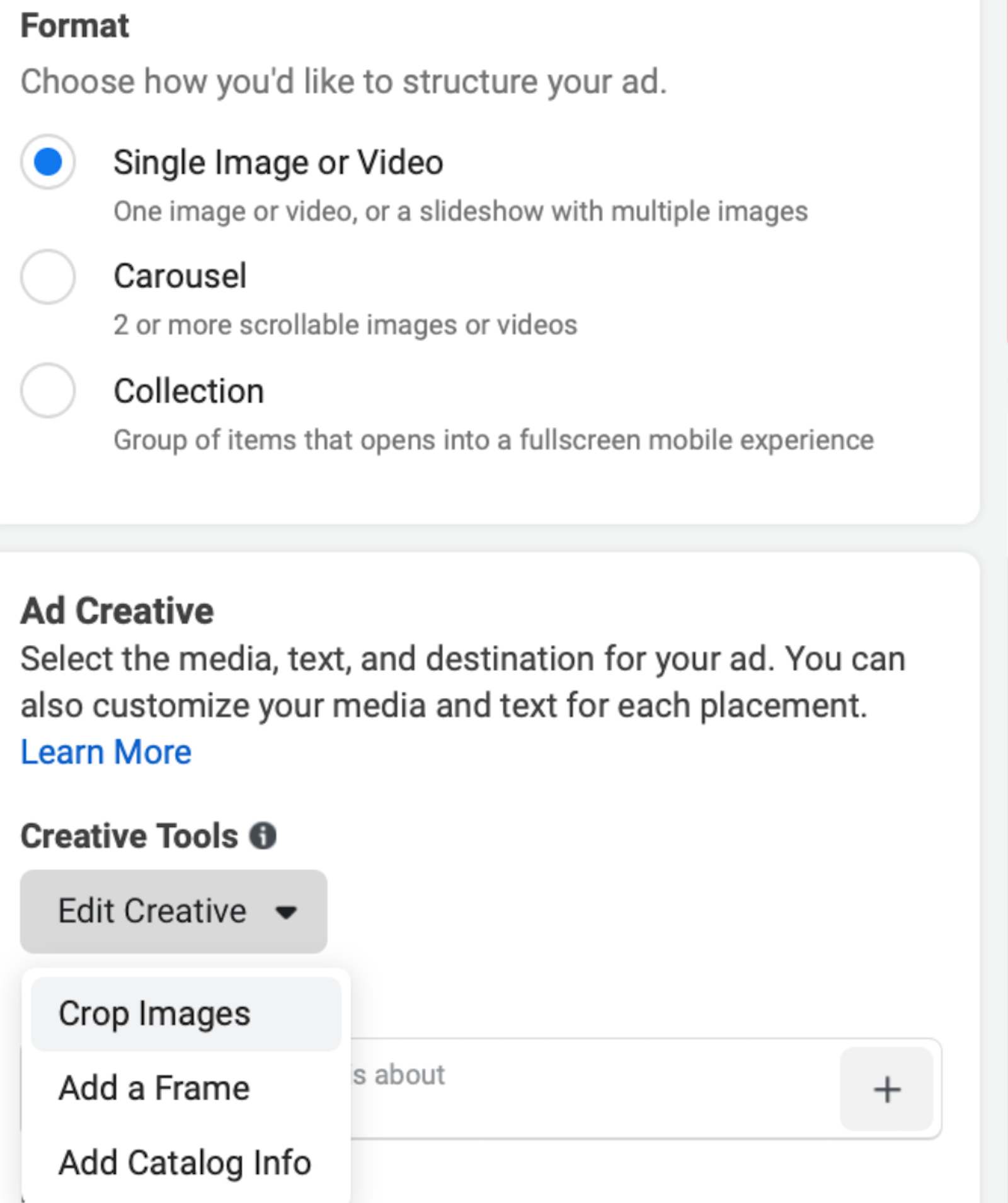
Find “Creative Tools” under the “Ad Creative” section, which will open a drop-down menu that lets you add a frame or catalog info to static images.
In this example, we’re adding pricing information. You can change the shape, color, and font of the tag that shares this information, along with the font and position.

Go to “Catalog Info” to add updated information like price to your static images on dynamic ads.
You can also upload frames to make evergreen content “seasonal,” like adding a Christmas garland frame surrounding your products before the holidays.
5. Choose Your First Carousel Visual Wisely
If you’re using dynamic ads or carousel ads, the first image is essential. It’s what users see first, and it can determine whether they interact with the ad or not.
The default option is to let the Facebook system automatically assign the product in the first card according to signals it has around what the person may be interested in. Another way to approach this is to choose your own image or video and therefore show unique content that represents your brand, before then showcasing your products.
Our recommendation is to test both approaches and understand what’s best for you. Overall we’ve seen when choosing high-value visuals to present your carousel, your campaign’s conversion rates can increase quickly.
6. Test Image Slideshows
Facebook has a “slideshow” feature, which automatically pulls product images from your catalog to create a short video you can use in your ad’s creative. These can be used both in carousel ads and single video ads.
Slideshows give you a chance to showcase more products to customers all at once, and can give you a video of solid quality without the expense and time of creation falling into your team. They can also allow you to showcase more images of a single item, such as showing a skirt on a mannequin and on a model.
You can enable slideshows under the creative section of the ad creation process. They’ll pull images automatically from your product set to show multiple images per item.

You can find “slideshows” under “Creative Options” when creating your ad campaigns.
7. Translate High-Performing Standalone Ads into Product Catalogs
Many brands test standalone ads and are able to see which products and creatives perform best long before they start testing dynamic product ads. You can use the information from early testing to take a single high-performing ad and turn it into a potential high-value product catalog.
If, for example, a cosmetic brand realized that images of women next to products that work well for their specific skin tone performed well, you can build entire catalogs of that group of relevant products.

This ad showcases the same pair of shorts in different colors, giving the brand a chance to display different versions of high-value products to create a high-converting ad.
In the example above, Vuori displays different variants of their top-selling shorts, showing users more of a high-value product at one time.
Again for a cosmetic brand, instead of promoting a single product at a time or running carousel ads that just show random products, grouping products by the skin tone of the wearer or the aesthetic they’re going for (like a “natural” look as opposed purple lipstick and blue eyeshadow) can increase product add-ons and average order values.
8. Test Different Catalogs Using Different Styles of Images
Choosing which types of images to use for your ad campaign can be difficult, and ultimately testing is the best way to determine what works best for your individual audience, product, and industry.
You may find that single product images on white backgrounds and plenty of negative space perform best. Some brands may realize that grouping products together in a single image works for them, while others may find that images showing the product in use works best.

Wren + Glory uses multiple different types of product images in a single carousel, including an image with a single product and an image with multiple products next to each other.
To determine what works best for you, set up split testing with types of images and videos while keeping the rest of your creatives the same. Facebook will optimize your ads automatically, and you can see which drives more interest.
9. Test Collection Ads
Collection ads are a mobile ad format that allows you to feature a variety of products all at once like an extended carousel ad. When users click on the collection, they’ll see a shoppable gallery of products.

Collection ads allow you to group like items in a mobile-friendly gallery that showcase multiple items in your inventory at once.
Ecommerce brands with product galleries can benefit from this ad format, as it’s proven to have the potential for high conversion rates.
A case study from TagsForHope that used collection ads, for example, saw a 22% increase in return on ad spend and 7,794 additional orders compared to other ad formats.
Setting up collection ads is easy when using dynamic formats. You’ll choose your product catalog, your product set, and the image or video you want to show up as the large cover photo above the collection.
Once you choose your product catalog, you can choose a product set to create themed collection ads.
You can split test different cover visuals, but we recommend choosing an image or video that’s performed well for you in the past on other ads.
10. Test Different Types of Product Sets
Testing is the name of the game when it comes to Facebook Ads, and while creating niche product catalogues can be good for creating campaigns with high conversion and add-on rates, it shouldn’t be your only strategy.
We also strongly recommend testing different broad product categories that make sense, especially for early campaigns when customers aren’t familiar with you yet.
A clothing company, for example, may create a product catalog for men’s clothing and one for women’s clothing. They may also have product catalogs for each season, or choose to break down products by price point and then place higher CPA bids for higher-value items.
This ad, for example, showcased baby items exclusively even though they offer a wider range of products on their site:

The Simple Folk creates product sets based on age groups to increase potential add-on purchases.
Make sure that you have enough budget to get 50 conversions per ad set per week when testing to give Facebook time to assess performance and optimize your campaigns accordingly. This will give you a more accurate look at campaign performance than if you rush to make a decision after a few days.
Final Thoughts
Facebook’s dynamic ads are an invaluable tool for marketers and business owners who are trying to create and manage ad campaigns at scale. They let Facebook take the reigns and do most of the hard work, leveraging your carefully-crafted creatives and offers to deliver the best ads to the right people at the right time.
When you’re using the right strategies, these ads can increase your conversion rates significantly while taking some of the time and effort burden of creation off your shoulders. This gives you more time to manage your campaigns, generate new ideas, and find ways to accomplish your marketing goals.
Ready to scale your paid social campaigns to new heights? Get in touch with us here.

